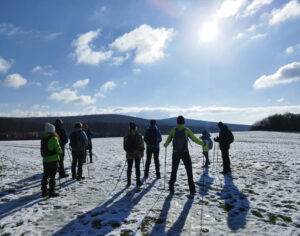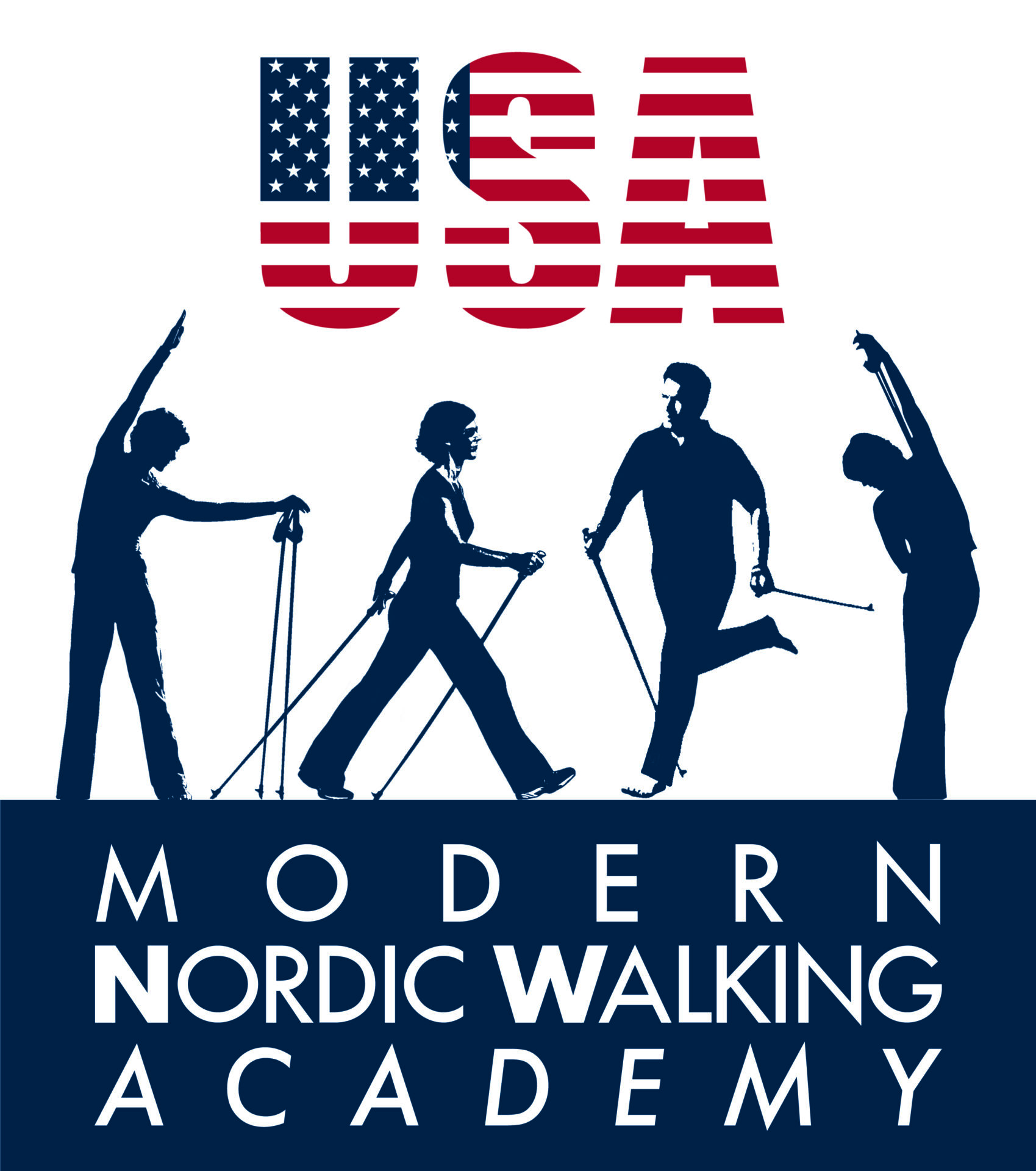
Date: 15.11.2016
Nordic Walking and support for patients’ treatment
Nordic Walking (NW) is a sport discipline that is subject to scientific research. It is primarily studied in relation to its impact on health promotion, disease prevention, and support for the treatment of various chronic diseases.
hviu
In particular, the relationship between NW and the following aspects is being investigated: /1/ Cancer prevention, as well as /2/ How NW aids in the treatment of oncological diseases within the framework of complementary tumor treatment.
Systematic analysis of scientific literature from 2010-2012:
- 16 randomized clinical trials (RCT) – 1062 patients
- 11 observational studies – 831 patients
- The effect of short-term and long-term NW training was observed on: heart rate, blood pressurercise capacity, maximum oxygen consumption, and patients’ quality of life.
Conclusions of meta-analyses:
- Nordic Walking has favorable effects on resting heart rate, blood pressure, exercise and sports capacity, maximal oxygen consumption, and quality of life in patients with various conditions.
- Nordic Walking is more effective than regular brisk walking without poles and, in some aspects, even more effective than jogging .
[Tschentscher M. et al. Health Benefits of Nordic Walking. A Systematic Review. Am J Prev Med 2013; 44(1); 76-84]
Nordic Walking – part of cancer patient care:
What impact can cancer have on walking?
- Increased risk of falls: can be a result of peripheral neuropathy as a side effect of chemotherapy. This can manifest as reduced balance, sensory disturbances, and impaired muscle control.
- Decreased performance, endurance, dynamics, and physical fitness.
- Decreased mobility: for example, due to lymphedema or surgical treatment.
Health benefits of Nordic Walking for cancer patients (… et al)
- Nordic Walking builds back muscles and promotes proper posture and balance during walking.
- Nordic Walking with the support of poles boosts confidence during walking and also increases muscle strength. Walking becomes safer and the ability to cover greater distances improves.
Nordic Walking and engaged muscles
- Nordic Walking involves the movement of the upper body, including the trunk and upper limbs [Nordic Walking: 90% of muscles versus regular walking: 70%].
- Nordic Walking increases heart rate by 10-15% more than regular walking.
- Physical exertion is perceived less and better tolerated during Nordic Walking.
- Nordic Walking increases the level of aerobic activity even at slower speeds, which has a beneficial impact on weight control.
- Nordic Walking has a impact on resting heart, blood pressure, exercise and sports capacity, maximal oxygen consumption, and quality of life in patients with various conditions.
Nordic Walking for women recovering from breast cancer treatment.
- Nordic Walking can have a positive impact on three areas of interest for women recovering from breast cancer treatment:
- Limited mobility and reduced muscle function
- Performance balance disorders and increased fatigue
- Lymphedema of the upper limbs
- Standard guidelines recommend starting Nordic Walking training at 30% of regular walking capacity (to assess the body’s response to activity) and gradually increasing intensity and duration later on.
- Important note: Before starting Nordic Walking activities, it is essential to consult with the treating oncologist/mammologist/gynecologist.
Limited mobility and reduced muscle function and performance:
- Nordic Walking engages the muscles of the upper body, including the chest, shoulder, and trunk, in addition to pushing off with the poles.
- This movement requires 30% more muscle activation than regular walking.
- Therefore, Nordic Walking can help regain strength and flexibility in the chest muscles that may have been affected by treatment.
What Nordic Walking can improve:
- Increase the range of motion of the chest
- Improve posture and body alignment
- Strengthen body stabilization
Upper body movements during Nordic Walking include:
- Chest and shoulder flexion and extension
- Trunk rotation
- During Nordic Walking, many muscles that may have been damaged during breast surgery and reconstruction are used. In healthy individuals, these muscles may or may not be utilized during regular walking. However, for individuals with posture and balance disorders, the demands on these muscles increase to ensure safe walking.
- Nordic Walking participants are instructed to walk at a pace that they can maintain and to use the poles within a comfortable range that does not cause pain. Over time, the range of motion can be increased, and the pace can be quickened according to the individual’s recovery status.
- Each participant may have an individual post-breast surgery condition, so it is recommended to listen to one’s own body.
Lymphedema/LE:
- If a woman has lymphedema of the upper limb, she should consult her doctor about planned activities before starting Nordic Walking (NW) training!
- NW techniques include: 1/ Repeated movements of the shoulder and arm; 2/ “squeeze and release” techniques for the hand, as well as other techniques. With proper application of NW, the poles should not be continuously gripped and squeezed – and this doubly applies to patients with lymphedema.
Balance disorders – fall prevention:
- The use of NW poles forces an upright posture and the use of small postural muscles during walking and standing.
- NW utilizes bilateral movement and helps participants develop the ability for symmetrical movement.
- The use of NW poles helps gain greater confidence in walking, especially for patients with peripheral neuropathy (which may be a result of chemotherapy) and other balance and stability disorders, where a person feels uncertain while walking and exercising.
Nordic Walking and pain relief in women with breast cancer undergoing treatment for aromatase inhibitor-associated arthralgia (AIAA):
- Joint pain caused by the use of AIAA reduces adherence to physical activities for women.
- According to several published studies, NW can reduce joint pain in women compared to regular walking. A recently published study confirmed that women with breast cancer being treated with AIAA can successfully complete a 6-week or 12-week NW intervention without any adverse effects.In conclusion:
The results:
of published studies confirm that Nordic Walking is an effective and valuable method suitable for the rehabilitation of breast cancer patients [PubMed 25751587].
Nordic Walking – and other proven health benefits
- Nordic Walking: fall prevention
- Nordic Walking: cardiorespiratory fitness
- Nordic Walking: improves adaptive capacity of heart rate variability in cancer patients by increasing autonomic heart regulation in patients, because it increases the autonomic regulation of the heart in patients with tumors during and after treatment. This phenomenon is considered a very important parameter for the prolonged survival of cancer patients. Improvement in autonomic control can be achieved through exercise, including Nordic Walking [PubMed 22895874].
Published studies on Nordic Walking
Research related to health issues:
– Nordic Walking and high blood pressure
– Nordic Walking and older individuals (seniors)
– Nordic Walking and functional capacity (especially in older age)
– Nordic Walking and Parkinson’s disease (posture, stance, gait)
– Nordic Walking and obesity management.
– Nordic Walking and diabetes mellitus
– Nordic Walking and chronic obstructive pulmonary disease (dyspnea in bronchitis…)
– Nordic Walking and rheumatic diseases (fibromyalgia)
Research related to fitness and conditioning.
Research related to sports athletics.
More interesting artickles and researches:
Patients undergoing radiotherapy treatment…
Breast or ovarian cancer treatments…
